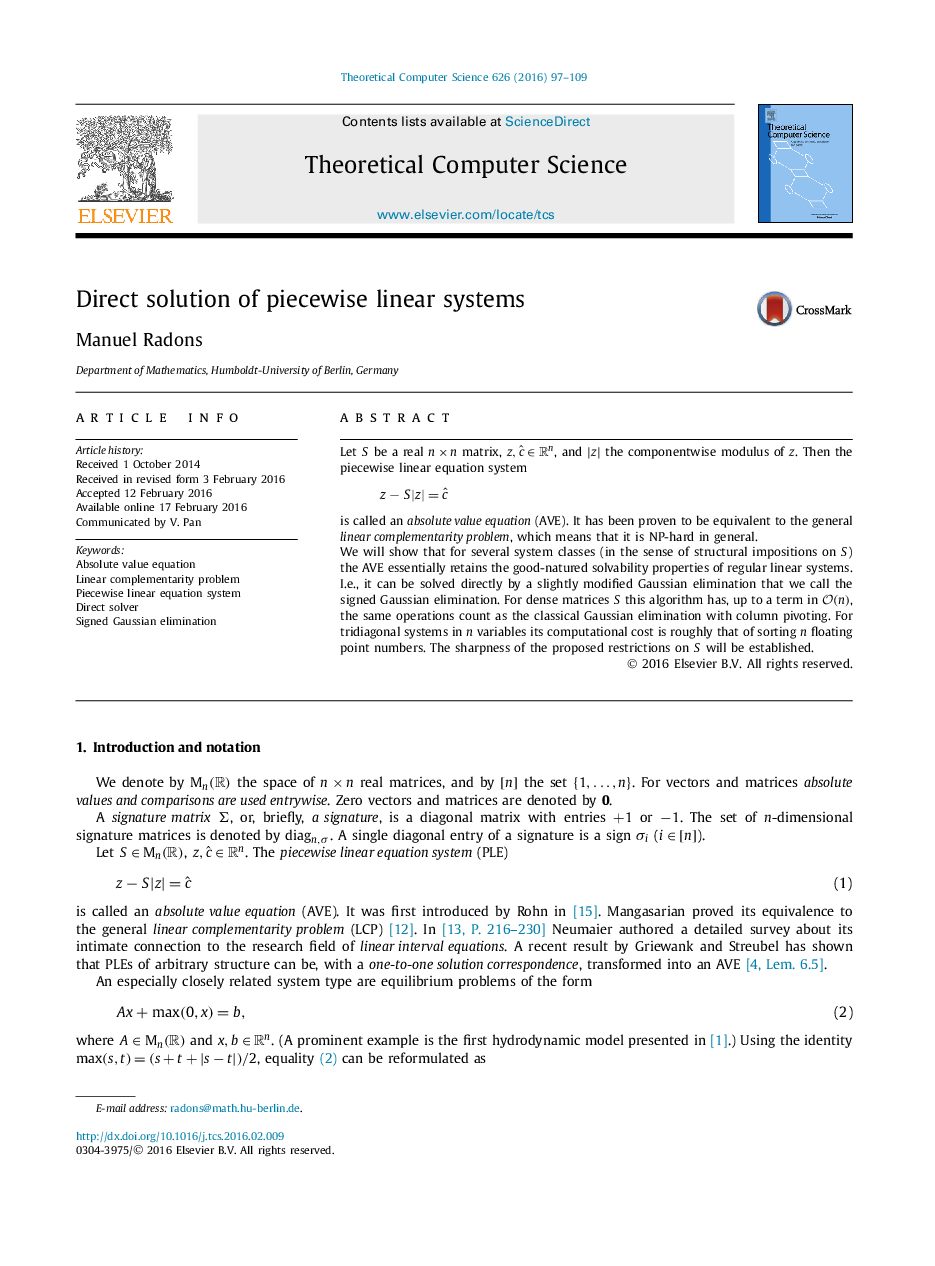| Article ID | Journal | Published Year | Pages | File Type |
|---|---|---|---|---|
| 435371 | Theoretical Computer Science | 2016 | 13 Pages |
•Several system types of the so-called absolute value equation can be solved directly.•Solving dense systems costs roughly the same as solving dense linear systems.•Solving tridiagonal systems in n variables has asymptotical cost of sorting n floats.
Let S be a real n×nn×n matrix, z,cˆ∈Rn, and |z||z| the componentwise modulus of z. Then the piecewise linear equation systemz−S|z|=cˆ is called an absolute value equation (AVE). It has been proven to be equivalent to the general linear complementarity problem, which means that it is NP-hard in general.We will show that for several system classes (in the sense of structural impositions on S) the AVE essentially retains the good-natured solvability properties of regular linear systems. I.e., it can be solved directly by a slightly modified Gaussian elimination that we call the signed Gaussian elimination. For dense matrices S this algorithm has, up to a term in O(n)O(n), the same operations count as the classical Gaussian elimination with column pivoting. For tridiagonal systems in n variables its computational cost is roughly that of sorting n floating point numbers. The sharpness of the proposed restrictions on S will be established.
